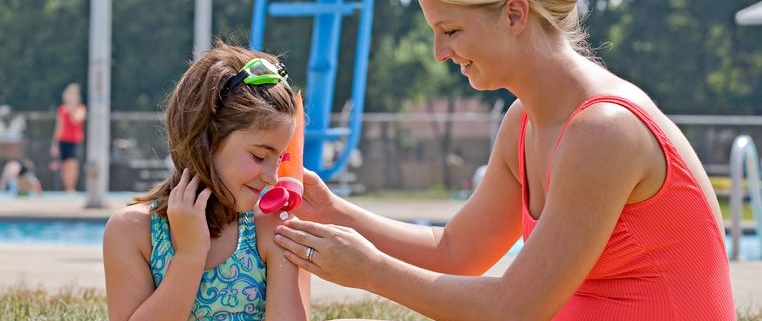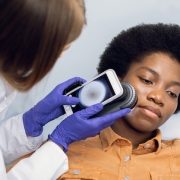Skin Cancer Awareness Month
Skin cancer is the most common type of cancer in the U.S. However, it is also a cancer that can be prevented in some cases. For Skin Cancer Awareness Month, let’s dive into the types of skin cancer, the risk factors, and how to prevent or reduce your risk for skin cancer.
Types of Skin Cancer
There are seven different types of skin cancer, but three types are the most common.
- Basal cell carcinoma (BCC)
BCC is the most common and while anyone can get BCC, it is more common in people with fair skin. BCCs typically develop after years of repeated sun exposure or indoor tanning and looks like a small skin-colored or light pink growth or bump found most often on the head, neck, and arms where people usually get more sun exposure.
- Squamous cell carcinoma (SCC)
The second most common form of skin cancer is SCC, which is also more common for people with fair skin but can happen to anyone. SCC looks like a firm red bump and is more common on the areas with more sun exposure, including face, ears, neck, chest, arms and back.
- Melanoma
Known as the most serious, melanoma tends to spread. Melanoma is much less common than BCC or SCC, but it is also the deadliest type of skin cancer, which makes early detection even more important. Melanoma usually shows up as a dark spot, or a growth on an existing mole.
Risk Factors
Like with many cancers, the risks don’t follow a strict list of risk factors. But there some things that we do or don’t do that can have an impact.
- Sun exposure, sun burns, and using indoor tanning beds can seriously increase your risk for skin cancer, as well as skin damage like premature aging and sunspots (also called age spots).
- Skin tone and how your skin reacts to sun – like if you burn easily – matters. People with fair or light skin are more prone to sunburns and sun damage.
- Some things, like genetics and family history can have an impact on someone’s risk of developing skin cancer. While you can’t change this risk factor, knowing means you and your doctor can be proactive.
Prevention
Overall, the best thing people can do to reduce their risk is reduce sun exposure and UV exposure (like indoor tanning beds) and get to know the moles and spots on your body, so you know if anything looks out of the ordinary.
Wearing protective clothing and sunscreen can provide a lot of protection. Wearing SPF 15 or higher when you go outside can decrease your risk of SCC and melanoma by 40% or more!
Having an annual skin exam can help spot any serious or potentially questionable spots or growths early. Your doctor should also know if you have had skin cancer in the past, if you have a family history, or are at a greater risk from overexposure to sun.
If you have any questions about spots on your skin, or if it’s been a while since your last skin exam, contact NOAH today and make an appointment.







